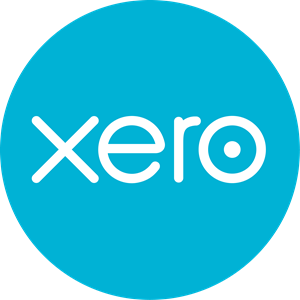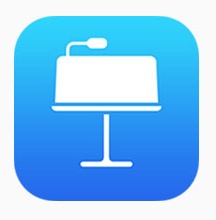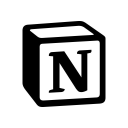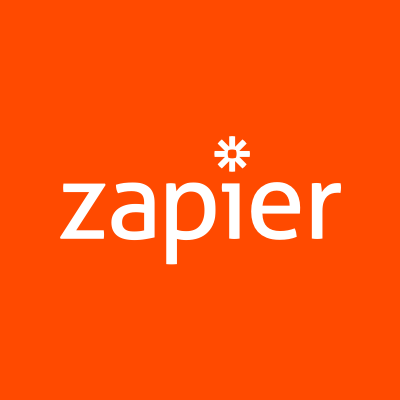How We Grew Our SaaS To $30K MRR In One Year
Hello! Who are you and what business did you start?
Hi! My name's Shai Schechter and I'm one of the co-founders of RightMessage.
RightMessage is a segmentation and personalization tool that helps online businesses increase conversions across all stages of their sales funnel.
You know how a good salesperson learns a bit about what you need and then talks about how what they're selling helps you—rather than just reading off a script? We make it point-and-click easy to have your website and your automated emails do exactly that.
RightMessage connects your existing email marketing software with your existing website, lets you segment your audience using on-site survey tools and our behavioral tracking engine, and then gives you a new superpower: displaying the right calls-to-action to exactly the right people based on who they are, what they need from you, and what they've already bought.
We ran a limited beta at the end of 2017, and launched to the public in January 2018. A year later RightMessage is installed on over 1,000 websites and bringing in $30k/mo.

What's your backstory and how did you come up with the idea?
I've always loved technology and I ran a few online businesses from my bedroom as a kid.
I founded an events company at university (when I should've been in lectures), and my love of software meant we were able to launch some pretty unique events… like a "Wall Street" nightclub where we installed screens and hacked the cash registers to make the drink prices rise and crash throughout the night. People loved it.
There's a lot to be said for building in public, keeping assumptions to a minimum, and iterating based on what you learn from your audience and their needs… It taught us so much about what the product needed to be, and more importantly what the product didn't need to be yet.
I started taking a lot of interest in online marketing, as a way to scale the web and events businesses… which eventually led to me transitioning the web consultancy to more of a marketing consultancy.
Again I'd bring those programming skills to the marketing space, and it gave me this powerful edge over other consultants.
I’d do things for clients like writing a few lines of code to make a marketing site show a more premium call-to-action to visitors who had already completed the basic one… and it drove these huge upticks in conversion rate.
Meanwhile, my friend Brennan (co-founder) had grown this huge online community for freelancers.
He's very much a marketer, but like me, he also had a programming background and had been hacking his site to do similar things with personalization. Like, he'd make his website ask visitors why they wanted his free course… and then use whatever reason they picked when promoting his paid course.
And like my clients, he was seeing his conversion rates skyrocket. 2x or 3x conversion rates on our first attempts weren’t at all unusual.
He was tweeting about all the things he was trying and the impact it was having, and a lot of marketers started following along. So he decided to launch an online course to teach marketers how to do similar things on their own sites.
It sold incredibly well.
People loved the concepts.
But when it got to the more technical parts they struggled to follow along. At which point the bigger companies would hire him to implement it for them… but most couldn't afford to. So he’s like:
What if there were a point-and-click tool for marketers to set all this up themselves on their sites, without writing any code?
Brennan and I started talking about packaging up the kinds of things we had been custom-coding for clients into a point-and-click tool any marketer could use on their own, and we agreed to team up and make it happen.
It was meant to just be a tiny side project: I'd build the tool, he'd bring his existing course audience, and we'd both keep running our existing companies full time.
Validation
We said we weren't writing a line of code unless we could get $10k of preorders in the bank… and thanks to the audience we’d built up through tweeting; a small amount of blogging; generally ranting about how things could be better to anyone who’d listen, we were able to make that happen in a matter of days. 6 weeks after that we had an incredibly crude but functional app to give them.

We worked closely with those preorder customers to refine the product over the following 6 months, building in public as much as possible to build up the audience, and officially launched to our list in January 2018.
And as the feedback started rolling in we started to realize we might have something bigger on our hands than a little evening project…
Take us through the process of building the product.
Like a lot of people who have been in the SaaS game for a while, I learnt the hard way (a product I built a few years back that I was sure would be the next Facebook and kept the idea secret and built in the dark for over a year before launching it to…crickets) that there's a lot to be said for building in public, keeping assumptions to a minimum, and iterating based on what you learn from your audience and their needs.
So we kept communication as open as possible with those early customers. Constantly showing them what we were doing, and trying it out on them as we built.




It taught us so much about what the product needed to be, and more importantly what the product didn't need to be yet. For example, where we were looking to build a super powerful editor that would let you personalize anything on your site, it turned out customers were far happier having simple “recipes” to pick from, that were more limited in what they could do but made it easier to get started from scratch.
The close communication worked really well—though I wish we'd done even more of it.
What we're doing is so new (nearly 100% of our customers aren't switching from any competitor), and so we're still learning the best way to describe the benefits to our potential customers and to make it super easy for them to get results.
The product is still evolving, and its focus is totally different than it was a year ago… but it's getting ever easier to attract and retain customers, so we feel like we're at least moving in the right direction.
Bootstrapping vs investment
Brennan and I both had existing businesses (bootstrapped, like we'd both always done), and we kept running them alongside building RightMessage.
That was our income streams before RightMessage had any recurring revenue. The early traction suggested RightMessage could eclipse them both, but the plan was to keep relying on our existing businesses for revenue in the short term, and transition to income from RightMessage as it grew.
Before our official launch, the CEO of one of our first preorder customers (Teachable) got in touch to try and persuade us to take investment.

He knew we were both bootstrappers through and through—and that's what we told him. We put together a list of the reasons we aren't keen on investment…
…and he wrote back with a way to work around each one.
...
"We don't want a board overruling us."
"I hear that. You'll keep full control."
"Pitching investors is time consuming. That's time we could be spending building and marketing."
"OK, I'll put together a syndicate of investors. You won't have to lift a finger."
We want to do what's best for our customers, not serve a bunch of shareholders.
"Yep. We won't have any say in the day-to-day running or direction."
...
And so on.
We were never anti-investment. We were just anti- those knock-on consequences we'd seen typically come with investment.
But with those negatives out of the picture—we couldn't see a reason not to.
So we accepted.
We used the Y Combinator safe ("Simple Agreement for Future Equity") as our investment agreement, which is becoming pretty standard and therefore easy to get signed and get back to work shipping a product.
We ended up raising a little over $500k, and used it to hire on both the marketing and the product sides to accelerate the journey.
Another thing that accelerated us, on the product side, was Laravel Spark. In fact, the entire reason we used PHP at all for the backend of the product was that Spark existed. It gives you all the stuff that every SaaS needs (registration and login, teams, billing and invoicing, API, UI scaffolding, etc) out of the box.
I wrote a bit about this here, but essentially I believe tools like this are absolutely game-changing in leveling the playing field and letting everyone compete. As a conservative estimate, I’d say it saved us weeks of building.
International co-founders
Brennan's a US citizen in the US, and I'm a British citizen in the UK. This made a lot of the mundane company formation stuff pretty challenging.
I won't go into the painstaking detail here, but the tl;dr is we ended up incorporating in the UK, but then re-incorporating in the US when we took investment in order to make various things about the investment (and subsequent US hiring) more straightforward.
For the US incorporation, we used Stripe Atlas to streamline, well, pretty much everything. Like Laravel Spark it takes something that just a few years ago was a significant barrier to entry, and magics it away behind a few clicks in a web browser. We're living in an incredible age!
Describe the process of launching the business.
We'd built up an email list of about 1,500 people in the months leading up to January 2017.
This was mostly from Brennan tweeting about the mistakes we were seeing a lot of in online marketing, the big impact personalization can have, and the cool ways you can get started with it, and then pointing them to a landing page.
Money validates that you’ve touched on a pain point… But it doesn’t validate that your product solves that pain point, yet. Work as closely as you can with those customers, one-on-one, to make sure you’re actually solving their problem and delighting them.
The landing page was some long-form copy about what we were doing, with four or five dropdown boxes where you could choose things about yourself (business type, email marketing tool you use, and so on) and see the copy update in real-time, as an example of the sort of thing personalization could do. It was simple, but it did the trick.
We made about $40k in that launch (mostly annuals). We were happy, but we knew there was still a lot of work ahead!
The biggest thing we learned post-launch was just how new the concepts we were enabling were to most of our audience. We'd got rid of the need to be able to code to make these powerful things happen on your website, but people were still overwhelmed.
The most common objections? "This sounds amazing, but I wouldn't know where to start..." or "I don't have time right now".
Reading between the lines, there was this perception that personalization was a big scary radical overhaul of your entire website—when the reality was that taking a few minutes to make one simple change to a headline was already enough to, in some cases, double conversion rates.
We knew we'd need to simplify the product, and do a lot more educational marketing, to really make this work.
Partly for that reason, we decided to keep sales high-touch for a while after launch: we didn't open up self-signup until the second half of 2018. In hindsight, this was a really good move, which I'll talk about later.
Since launch, what has worked to attract and retain customers?
High touch
Selling high-touch (getting on the phone with each prospective customer, giving them a demo) in the early days worked really well for us.
We literally didn’t allow self-signup through the website at all for several months after launch.
Those demos took a ton of time and energy, but it meant we were able to test out different ways of describing the product and were able to see firsthand what was confusing for people and what led to that "a-ha" moment where the lead suddenly saw how they could benefit from what we were offering.
I'd highly recommend doing live demos for as long as possible, and then codifying what you learn into more scalable marketing as you learn.
Scaling marketing
We're only now taking everything we learned from that and turning it into more scalable forms of marketing—starting to ramp up our content and email marketing, for example.
Our approach is simple: just try to be as educational and informative as possible.
We’re teaching everything we know, and everything we figure out along the way, about best practices, things that work to level up the things our audience care about (typically more subscribers, more sales, and a happy audience), and so on.
And we don’t do the hard sell: as far as possible we show how you could get the results we’re talking about without using our product at all. Once readers are on board with the concepts, and think they’d benefit, then we can mention how they can often make those things happen a lot quicker and more easily with our product should they choose to.
Partnerships
Partnerships are a big thing for us as well.
There's so much value in tapping into existing audiences—guest podcasting, joint webinars, and so on.
Look at what products you complement or integrate with (for us that's primarily the email marketing tools and website builders)—and work with them to share the benefits of what you do with the audience they already have. This is something we'll be continuing to do in a big way in the coming months.
Retaining existing customers
We knew from the beginning that we had the sort of product that someone would stay with forever if they see results, and churn pretty fast if they didn't.
In fact, our first hire was someone to help with customer success. Their job was literally to go through every account, see whether it was set up properly and seeing results, and reach out and offer to help if it wasn't.
Again, this taught us a lot about what people needed. It was another thing that we made sure to keep manual for as long as possible. A year later we're just starting to test the waters of automating parts of it—but proactive customer success will still be a big part of our strategy.
How are you doing today and what does the future look like?
Moving from a bootstrapped mindset to taking investment was an eye-opener (though Brennan and I still operate like bootstrappers in a lot of ways!) But at the end of the day if you decide to take the money you have to spend it.
Mostly due to hiring, we went from profitable to losing tens of thousands of dollars a month almost overnight. We're now very close to breaking even again, 15 months after taking the investment.
We’re still figuring out where in the market we want to sit. We have customers paying $19/month and we have customers paying $5k/month, and ultimately that lack of focus could make it harder to keep scaling longer term, so it’s something we’ll be keeping a close eye on.
RightCTA
One thing we’re rolling out now that’s generating more excitement than anything we’ve done until now is RightCTA: a suite of on-site widgets that can ask questions to learn about your visitors and then pitch the perfect offer to suit what they need, what they’ve already bought, and so on.
Whereas most companies we speak with don’t already know what they’d personalize on their site, they all know what they want to pitch to whom.
Almost every website is still pitching their newsletter or free course to their existing newsletter/free course subscribers…
…because they just don’t have the tools to make their ideal situation (right offer to the right visitor) happen, or to track how effective it is.
Through starting the business, have you learned anything particularly helpful or advantageous?
Building an audience first is huge
Building up an audience first, before there was even the slightest hint of this becoming a product, was a massive help.
Immersing yourself in a market and looking for pain points that come up, again and again, is a great way to find a legitimate product idea.
And talking about the problems you do see will help build that captive audience to sell to once you do have something to sell.
Customers paying you isn’t always enough
People often say that validation is when people actually pay you, not just when they’re saying they would pay you…
Which is true—but that doesn’t mean that once they do pay you’ve validated everything.
Money validates that you’ve touched on a pain point…
But it doesn’t validate that your product solves that pain point, yet.
Work as closely as you can with those customers, one-on-one, to make sure you’re actually solving their problem and delighting them.
Until you’re providing a ton of value, to the point that that customer is raving about your solution to everyone they know, you’ve still got work to do!
We could’ve worked even more closely with even more potential customers at the start.
Some of what the early bird's value isn't necessarily what later users need, and it took us a while to figure that out and adapt as we grew.
Early adopters are always going to be at a later stage of customer awareness than the market as a whole, and so it’s important not to bet all your customer validation on what early adopters are saying.
Every time we’ve been able to simplify / lower the barrier-to-entry in terms of how much pre-existing knowledge you need to get going with the product, we’ve seen a big uptick in interest and MRR.
What platform/tools do you use for your business?
I mentioned Stripe Atlas earlier, but it’s worth repeating. It abstracts away so much of the hassle of incorporating in the US, especially with a non-US founder.
We used to keep all our internal documentation in Google Docs, but we’re now loving Notion for a lot of this instead.
One challenge we had with tools was how to get a single cohesive view of a person as they move from being an inbound or outbound sales prospect to a customer; reactive customer support & proactive customer success; and so on. There are some tools out there trying to do all the communication in one place, but we didn’t find anything that worked for us.
Instead, we’re currently testing out using dedicated tools for each task (Help Scout for customer support; Drip for marketing emails), and then using Pipedrive as our official “person database” and Zapier to tie them all together.
What have been the most influential books, podcasts, or other resources?
For me, the thing that's more influential than any book or podcast has been getting out and going to conferences.
Not the massive 10,000 person industry conference, but more intimate (100-300 people) single-track conferences targeting small business owners, where everyone is genuinely interested in what each other is doing and are eager to help one another.
It's been invaluable for business, but I've made fantastic friendships too. MicroConf is a great place to start.
Advice for other entrepreneurs who want to get started or are just starting out?
Minimal Viable Products don’t have to be apps.
Our MVP wasn’t something you could log in to: it was the consulting gigs I was doing for clients. And the course Brennan was selling.
And then we iterated to some custom code we wrote bespoke for each of our early access customers as one-offs, stored on Amazon S3 (effectively a consulting gig, just with very fixed deliverables), hooked up to Mixpanel behind the scenes because we hadn’t built any kind of reporting code of our own.
There still wasn’t an app, at several $k MRR.
That’s the kind of thing that helps you launch quickly.
Sometimes it pays to think outside the box and look for any quicker ways to validate what you’re offering without spending too much time building what you think the ultimate solution will be.
Resist the urge to automate everything
It can be tempting to automate all your marketing, all your customer success, and so on.
“We can set an email to go out after signup asking for feedback!”
But there’s a lot to be said for doing things manually first.
That human touch can be really powerful, and you’ll learn so much more by starting real conversations.
Eventually when you hit on a formula that works, and you’re growing, you can automate certain things away.
But early on you’re in learning mode, and automating your best guess of how things should be doesn’t help you learn.
Look after yourself
It’s so important to have a network of people you can chat to; get advice from; be supported by (both from a business perspective and a personal perspective).
Have downtime from work.
Be honest when things aren’t going well.
Don’t work and relax in the same place.
Sherry Walling is the guru on this: follow her.
Are you looking to hire for certain positions right now?
We're fortunate to have by far the most awesome team I've ever worked with…


We're not hiring right now—but we likely will be later in the year across customer success, marketing, and product. Follow us (Twitter/FB/email below) to stay in the loop.
Where can we go to learn more?
- Website: rightmessage.com
- Facebook community: facebook.com/groups/personalizationmarketing
- Twitter: @shaisc / @rightmessageapp
- Blog: rightmessage.com/blog
If you have any questions or comments, drop a comment below!

Download the report and join our email newsletter packed with business ideas and money-making opportunities, backed by real-life case studies.

Download the report and join our email newsletter packed with business ideas and money-making opportunities, backed by real-life case studies.

Download the report and join our email newsletter packed with business ideas and money-making opportunities, backed by real-life case studies.

Download the report and join our email newsletter packed with business ideas and money-making opportunities, backed by real-life case studies.

Download the report and join our email newsletter packed with business ideas and money-making opportunities, backed by real-life case studies.

Download the report and join our email newsletter packed with business ideas and money-making opportunities, backed by real-life case studies.

Download the report and join our email newsletter packed with business ideas and money-making opportunities, backed by real-life case studies.

Download the report and join our email newsletter packed with business ideas and money-making opportunities, backed by real-life case studies.





















